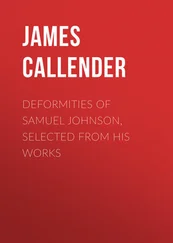The xylophone is a species of harmonica composed of strips or cylinders of wood, struck with two little hammers. It produces a clattering sound, both powerful and piercing.
To complete this catalogue of sounds mention should be made of the strings playing col legno , that is with the wood or back of the bow. The sound produced is similar to the xylophone, and gains in quality as the number of players is increased.
A tableis appended showing the range of the celesta, glockenspiel and xylophone.
Percussion instruments producing indefinite sounds.
Instruments in this group, such as triangle, castanets, little bells, tambourine, switch or rod ( Rute. Ger.), side or military drum, cymbals, bass drum, and Chinese gong do not take any harmonic or melodic part in the orchestra, and can only be considered as ornamental instruments pure and simple. They have no intrinsic musical meaning, and are just mentioned by the way. The first three may be considered as high , the four following as medium , and the last two as deep instruments. This may serve as a guide to their use with percussion instruments of determinate sounds, playing in corresponding registers.
Comparison of resonance in orchestral groups and
combination of different tone qualities.
In comparing the resonance of the respective groups of sound-sustaining instruments we arrive at the following approximate conclusions:
In the most resonant group, the brass, the strongest instruments are the trumpets, trombones and tuba. In loud passages the horns are only one-half as strong, 1 Trumpet = 1 Trombone = 1 Tuba = 2 Horns. Wood-wind instruments, in forte passages, are twice as weak as the horns, 1 Horn = 2 Clarinets = 2 Oboes = 2 Flutes = 2 Bassoons; but, in piano passages, all wind-instruments, wood or brass are of fairly equal balance.
It is more difficult to establish a comparison in resonance between wood-wind and strings, as everything depends on the number of the latter, but, in an orchestra of medium formation, it may be taken for granted that in piano passages, the whole of one department ( all 1st Violins or all 2nd Violins etc.) is equivalent in strength to one wind instrument, (Violins I = 1 Flute etc.), and, in forte passages, to two wind instruments, (Violins I = 2 Flutes = 1 Oboe + 1 Clarinet, etc.).
It is still harder to form a comparison with instruments of little sustaining power, for too great a diversity in production and emission of sound exists. The combined force of groups of sustained resonance easily overpowers the strings played pizz. or col legno , the piano played softly, or the celesta. As regards the glockenspiel , bells, and xylophone, their emphatic tone will easily prevail over other groups in combination. The same may be said of the kettle-drums with their ringing, resounding quality, and also of other subsidiary instruments.
The influence of the timbre of one group on another is noticeable when the groups are doubled; for instance, when the wood-wind timbre is closely allied to the strings on the one hand, and to the brass on the other. Re-inforcing both, the wind thickens the strings and softens the brass. The strings do not blend so well with the brass, and when the two groups are placed side by side, each is heard too distinctly. The combination of the three different timbres in unison produces a rich, mellow and coherent tone.
All, or several wind instruments in combination will absorb one department of added strings:
|
2 Fl. |
+ |
2 Ob. |
+ |
Vns I, |
| or: |
Конец ознакомительного фрагмента.
Текст предоставлен ООО «ЛитРес».
Прочитайте эту книгу целиком, купив полную легальную версию на ЛитРес.
Безопасно оплатить книгу можно банковской картой Visa, MasterCard, Maestro, со счета мобильного телефона, с платежного терминала, в салоне МТС или Связной, через PayPal, WebMoney, Яндекс.Деньги, QIWI Кошелек, бонусными картами или другим удобным Вам способом.












